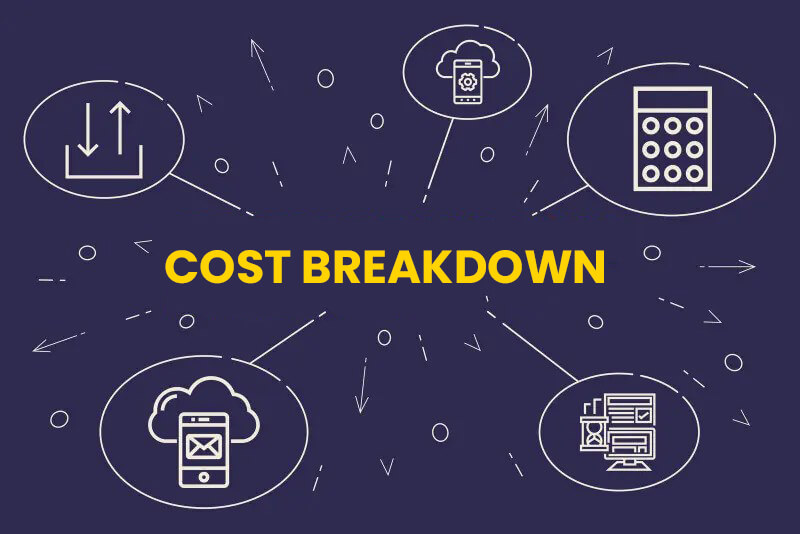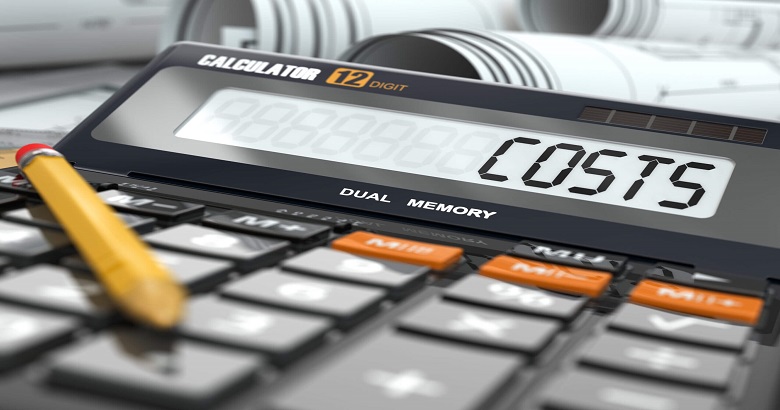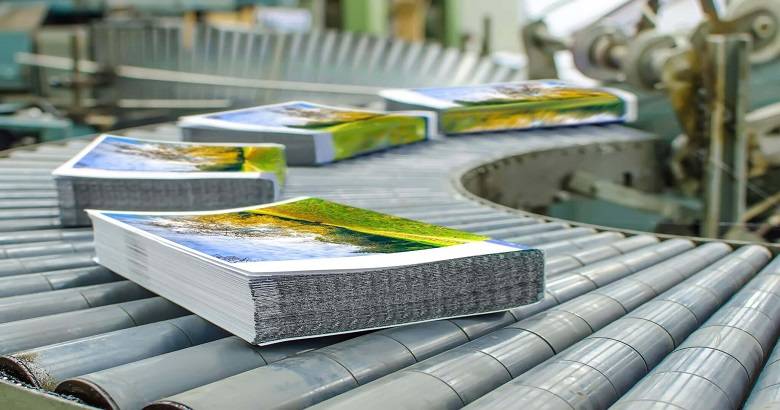The process of printing a book is both an art and a science, requiring a careful balance of quality, efficiency, and cost. For aspiring authors, self-publishers, or even established publishing houses, understanding the various factors that influence the cost of printing a book is crucial. This comprehensive guide delves into the myriad aspects that contribute to book printing costs, providing a detailed overview to help you make informed decisions.
Key Factors Influencing Book Printing Costs
Print Run Size
The number of copies you intend to print, known as the print run, significantly affects the cost per book. Generally, the higher the print run, the lower the cost per unit due to economies of scale. However, this doesn’t mean that printing large quantities is always the best choice. It’s essential to balance your print run with your expected sales to avoid excess inventory and storage costs.
Printing Method
There are two primary printing methods: offset printing and digital printing.
- Offset Printing: This traditional printing method is cost-effective for large print runs. It involves creating metal plates for each page, which are then used to transfer ink onto paper. The initial setup costs are higher, but the per-unit cost decreases significantly with larger quantities.
- Digital Printing: Ideal for smaller print runs, digital printing doesn’t require plates. It uses digital files to transfer images directly onto paper. While the per-unit cost is higher compared to offset printing, the lack of setup costs makes it more economical for short runs.
Paper Type and Quality
The choice of paper greatly influences the overall cost. Factors such as weight (measured in GSM – grams per square meter), texture, coating (glossy, matte, or uncoated), and color can affect both the price and the final look of the book. Higher-quality paper will generally cost more but may be necessary depending on the book’s purpose and target audience.
Book Dimensions and Page Count
The size of the book and the number of pages play a crucial role in determining the cost. Larger books and those with more pages require more paper and ink, leading to higher expenses. Additionally, unusual sizes or custom formats may incur extra costs due to specialized printing requirements.
Binding Type
The binding method can significantly impact the cost and durability of the book. Common binding types include:
- Perfect Binding: Often used for paperback books, where pages are glued together at the spine. It’s cost-effective but less durable than other methods.
- Saddle Stitching: Typically used for shorter booklets or magazines, where pages are stapled together. It’s inexpensive but not suitable for thicker books.
- Hardcover Binding: Provides a premium look and feel with greater durability. It’s more expensive due to the additional materials and labor required.
- Spiral and Wire-O Binding: Common for workbooks and manuals, allowing the book to lie flat when open. Costs vary depending on the materials used.
Color vs. Black and White Printing
Color printing is substantially more expensive than black and white. This is due to the additional inks and more complex printing process required. If your book includes illustrations, photographs, or color charts, expect higher printing costs. Consider whether color is essential for your book’s purpose or if black and white could suffice.
Cover Design and Finishing
The cover is often the first thing a potential reader sees, making its design and quality critical. Costs associated with cover design include:
- Cover Stock: The type and quality of paper used for the cover.
- Finishing Options, Such as lamination, embossing, foil stamping, or spot UV coating, which add to the visual appeal and durability but also increase costs.
- Design Fees: If you’re hiring a professional designer, their fees will add to the overall cost.
Additional Features
Special features such as dust jackets, slipcases, ribbon markers, and custom endpapers can enhance the book’s appeal but also add to the expense. These are typically used for high-end editions or special releases.
Shipping and Distribution
Once the books are printed, they need to be shipped and distributed. Shipping costs depend on the weight, dimensions, and destination of the books. Distribution can include storing inventory, handling orders, and delivering books to retailers or directly to customers.
Cost Breakdown

Let’s break down the typical costs associated with printing a book, assuming a standard 6″ x 9″ paperback with 200 pages, a full-color cover, and a black-and-white interior.
Manuscript Preparation
Before the actual printing process begins, the manuscript must be thoroughly prepared. This stage includes editing, proofreading, formatting, and cover design.
- Editing and Proofreading: Depending on the editor’s experience and the manuscript’s complexity, costs can range from $500 to $3,000 or more. Professional editing is crucial for ensuring the quality and readability of your book.
- Formatting: This involves arranging the text and images to fit the book’s dimensions and ensuring that it meets printing standards. Formatting services typically cost between $100 and $500.
- Cover Design: A professionally designed cover can range from $100 to $1,000, depending on the designer’s reputation and the complexity of the design. Custom illustrations or photography can add to the cost.
Printing Costs
Printing costs are influenced by the factors discussed earlier, such as print run size, printing method, paper quality, and binding type. Here’s a breakdown based on a hypothetical scenario:
- Print Run Size: Let’s assume a print run of 1,000 copies.
- Printing Method: Offset printing is selected for this quantity.
- Paper Quality: Standard 60-80 GSM paper for the interior and 250 GSM for the cover.
- Binding Type: Perfect binding for a paperback.
For a 200-page, 6″ x 9″ paperback, the cost per book might be around $2.50 to $4.00. Therefore, for 1,000 copies, the total printing cost could range from $2,500 to $4,000.
Cover Finishing
Adding finishing touches to the cover can enhance the book’s appeal but will increase the cost:
- Lamination (Glossy or Matte): $0.50 to $1.00 per book.
- Embossing or Debossing: $0.50 to $2.00 per book.
- Foil Stamping: $0.50 to $2.00 per book.
- Spot UV Coating: $0.50 to $1.50 per book.
If you choose a combination of these features, the cost for cover finishing could add an additional $1 to $5 per book.
Additional Features
Special features add uniqueness to the book but come at a premium:
- Dust Jackets: $1.00 to $3.00 per book.
- Slipcases: $2.00 to $10.00 per book.
- Ribbon Markers: $0.50 to $1.00 per book.
- Custom Endpapers: $1.00 to $3.00 per book.
Shipping and Distribution
Shipping costs depend on the weight and destination of your books. For our hypothetical 200-page paperback, the weight might be around 0.5 pounds per book. Shipping costs can range from $0.50 to $2.00 per book for domestic shipping and higher for international shipping.
Distribution involves warehousing, order handling, and delivery:
- Warehousing: Monthly storage fees can range from $50 to $200, depending on the number of books stored.
- Order Handling: Fulfillment services can charge $1 to $3 per order plus shipping costs.
Marketing and Promotion
Though not directly related to printing, marketing and promotion are essential for the book’s success. Costs can vary widely:
- Book Launch Events: $500 to $2,000.
- Advertising (Online and Print): $100 to $10,000.
- Public Relations: Hiring a PR firm can range from $1,000 to $5,000 per month.
- Social Media Campaigns: $100 to $1,000 or more.
ISBN and Barcodes
An International Standard Book Number (ISBN) and barcode are necessary for retail distribution. The cost for an ISBN in the United States is around $125 for a single ISBN or $295 for a block of ten. Barcodes can be purchased for $25 to $50 each.
Miscellaneous Costs
Other potential costs include:
- Legal Fees: If you need legal advice or copyright services, fees can range from $50 to $300 per hour.
- Software and Tools: If you use specialized software for writing, design, or project management, subscription fees might apply.
Total Cost Estimate

Combining all these elements, let’s estimate the total cost for printing 1,000 copies of a standard 200-page 6″ x 9″ paperback book with some additional features and distribution.
Example Breakdown (Continued):
- Manuscript Preparation: $1,000 (Editing and Proofreading) + $300 (Formatting) + $500 (Cover Design) = $1,800
- Printing Costs: Assuming $3.00 per book for 1,000 copies = $3,000
- Cover Finishing: Assuming a combination of lamination and embossing, adding $2.50 per book = $2,500
- Additional Features: Including a dust jacket and ribbon markers, adding $2.50 per book = $2,500
- Shipping and Distribution: Estimating $1.50 per book for domestic shipping and distribution = $1,500
- Marketing and Promotion: Setting a modest budget = $2,000
- ISBN and Barcodes: Cost for a single ISBN and barcode = $150
- Miscellaneous Costs: Legal fees and software subscriptions, estimating = $500
Total Estimated Cost
Summing up all these components:
- Manuscript Preparation: $1,800
- Printing Costs: $3,000
- Cover Finishing: $2,500
- Additional Features: $2,500
- Shipping and Distribution: $1,500
- Marketing and Promotion: $2,000
- ISBN and Barcodes: $150
- Miscellaneous Costs: $500
Total Estimated Cost: $13,950
This estimate provides a comprehensive view of the potential costs involved in printing a book. It’s important to note that these figures can vary based on specific choices and market conditions.
Cost-Saving Tips
While the costs listed above can seem daunting, there are several strategies you can employ to reduce expenses:
Print on Demand (POD)
Print on Demand (POD) services can be a cost-effective solution for smaller print runs or first-time authors. POD allows you to print books as they are ordered, eliminating the need for large upfront investments and reducing storage costs. Companies like Amazon’s KDP, IngramSpark, and Lulu offer POD services.
Bulk Printing Discounts
If you anticipate high demand, printing in bulk can significantly lower the cost per unit. Offset printing becomes more economical with larger quantities, so if you have confidence in your sales projections, this could be a viable option.
Efficient Manuscript Preparation
Investing in good editing and formatting software can save costs in the long run. Additionally, consider learning basic design skills to handle some of the formatting and design work yourself, reducing reliance on external services.
Simplify Cover and Finishing Options
While special cover finishing options add to the book’s appeal, they also increase costs. Opting for simpler designs and finishes can help manage expenses. For example, choose a high-quality matte laminate cover without additional embossing or foil stamping.
Negotiate with Suppliers
Always get multiple quotes from printers and negotiate terms. Many companies are willing to offer discounts or better rates, especially if you commit to future projects.
Utilize Digital Marketing
Traditional marketing methods can be costly. Leveraging digital marketing strategies like social media, email campaigns, and online ads can be more cost-effective and provide a better return on investment. Additionally, building a strong author platform and engaging with your audience online can drive organic sales.
Crowdfunding
Platforms like Kickstarter or Indiegogo can help raise funds for your book project. Crowdfunding not only provides the necessary capital but also helps gauge interest and build an initial reader base.
Partner with Bookstores and Libraries
Establishing relationships with local bookstores and libraries can lead to consignment arrangements, where books are sold on your behalf. This approach can reduce distribution costs and increase visibility.
Self-Distribution
Handling distribution yourself, especially for smaller print runs, can save costs. This involves storing books at home or in a small storage unit and managing shipping and order fulfillment independently.
Conclusion
Printing a book involves a multifaceted process with costs that can add up quickly. By understanding the various factors that influence these costs and exploring cost-saving strategies, you can make more informed decisions and better manage your budget.
Whether you choose offset printing for large-scale production or Print on Demand for smaller runs, each option has its unique advantages and cost implications. Careful planning and strategic decision-making will help ensure that your book printing project is both successful and financially viable.
Remember, the ultimate goal is to produce a book that meets your quality standards and resonates with your audience, all while staying within your budget. With the right approach, printing a book can be a rewarding and profitable endeavor.
For more information, Contact us today to get a personalized quote and learn how we can help you achieve your printing goals.
Frequently Asked Questions
1. What is the average cost to print a single book?
The average cost to print a single book can vary widely depending on various factors such as the book’s size, page count, paper quality, and whether it’s printed in color or black and white. Generally, for a standard 200-page black and white paperback, the cost can range from $2 to $4 per copy. For a color book of the same length, the cost might range from $10 to $30 per copy. Hardcover books typically cost more due to additional materials and binding processes.
2. How does print-on-demand (POD) affect the cost of printing a book?
Print-on-demand (POD) significantly affects the cost structure of printing a book. POD allows authors to print copies as they are ordered, eliminating the need for large upfront printing costs and reducing inventory storage expenses. Although the per-unit cost of POD is higher compared to traditional bulk printing, it minimizes financial risk by allowing authors to print only what they need. This model is particularly beneficial for self-published authors or those testing the market with smaller print runs.
3. What are the cost differences between printing in black and white versus color?
Printing in black and white is significantly less expensive than printing in color. The cost difference arises because color printing requires more complex and costly processes, including the use of multiple inks and more precise calibration. For example, a 200-page black-and-white book might cost between $2 and $4 per copy to print, whereas the same book in full color could cost between $10 and $30 per copy. Authors need to consider whether the added expense of color printing is justified by their content and target audience.
4. How do trim size and binding options affect printing costs?
Trim size and binding options greatly affect printing costs. Trim size refers to the final dimensions of the book, and larger books require more paper, thus increasing costs. Standard trim sizes are more cost-effective because they fit within common printing templates and machinery. Custom sizes may incur additional setup fees. Binding options also impact costs; for example, hardcover books are more expensive to produce than paperbacks due to additional materials and the binding process. Other binding options like spiral or saddle-stitching may also have different cost implications.
5. Can printing costs be reduced through bulk orders or other strategies?
Yes, printing costs can be reduced through several strategies, with bulk ordering being one of the most effective. Ordering larger quantities typically reduces the per-unit cost due to economies of scale, as the setup costs are spread over more copies. Other strategies include choosing standard paper and trim sizes, opting for black and white printing instead of color, and simplifying the book’s design and binding. Additionally, working with a single printer for multiple projects can sometimes result in negotiated discounts or better rates.



